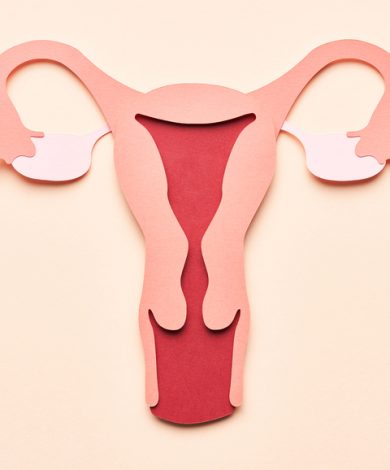Too many women don’t know what or where their pelvic floor is until after they…
Body
What Happens at Pelvic Health Physical Therapy? A PT Breaks Down All of the Details
September 6, 2021 • By Eliza Etter

As a Pelvic Health Physical Therapist, I am thrilled that this type of care is becoming more mainstream. I am also fully aware that many people are still hesitant, nervous, or full out scared to consider making an appointment. Because… What will it be like? Understandable, of course.
Either way, you and your pelvic floor deserve to be cared for after having a baby, whatever your concern may be. Incontinence, pelvic pain, pain with sex, fear around how to inhabit this new body, or feeling like you just don’t know what’s happening.
Since I want you to feel confident getting the support you deserve, I’m here to answer the most common questions I get about Pelvic Health PT and what you can expect at your first appointment.
So…what is Pelvic Health Physical Therapy?
Pelvic Health PT is a specialization that addresses concerns of the pelvis. Namely, the pelvic floor. Which, as you probably already know, often goes unaddressed. People don’t want to talk about it because you may have to say the words vagina. Or heaven forbid anus. So, let’s talk about it. Because you need and deserve to know what’s going on in your body.
What is the pelvic floor?
The pelvic floor is a hammock of muscles, nerves, fascia (the spider web-like material that connects everything together), and ligaments at the base of our pelvis.
It helps to support…
…all of our pelvic and abdominal organs
…control of bowel and bladder function
…sexual function
…the stability of our pelvis which affects the stability of our hips and spine.
The pelvic floor is a Rockstar multitasker – like all you mamas out there!
However, Pelvic health PT is so much more than just addressing the pelvic floor. As pelvic health physical therapists, we look at all areas of your body and how they affect your pelvis and your pelvic floor. Essentially, everything that is directly or indirectly connected to your pelvis.
Your hips, back, abdomen, and ribcage all influence how your body moves and functions throughout your day. Everything you do all day long, like standing up from a chair, lifting and carrying kiddos, walking – all involve your pelvic floor and the surrounding structures.
How do I know if this is for me?
If you have heard of pelvic health PT, you probably have a bunch of ideas in your mind about what it’s like and who it’s for. Maybe you are picturing someone who needs a diaper just like your baby. Maybe you’re scared to go because you don’t know what to expect. Maybe you figure what you’re experiencing “isn’t that bad” and that it’s all “normal for a new mom.” Or maybe you’re scared we are going to be near your private areas and you won’t know what’s going on.
I get it. And I’m here to tell you that no one is going to go anywhere without a thorough discussion and prior consent. We are experienced professionals here to care for you. We do this all the time and will walk you through each step, because if how your pelvic floor feels or functions is concerning to you or impacting your quality of life, then it’s important to address.
So, what can pelvic health PT help with?
- difficulty or pain pooping
- fecal leakage
- urinary urgency or frequency (running to the bathroom all the time)
- pelvic organ prolapse
- pain with sex
- pelvic, hip and back pain
- diastasis recti abdominis (the separation of your abdominal muscles) or The “Gap”
- scar tissue mobilization (for perineal and/or C-section scars)
- pubic symphysis dysfunction (if you have pain standing on one leg to put your pants on, this may be why)
- sacroiliac joint (SIJ) pain or instability
- feeling of overall weakness postpartum
- looking for specialized guidance as you return to exercise (maybe not feeling so clear after your doctor has “cleared” you to return to exercise)
Just to name a few!
We can also help you prepare for birth, whether it’s your first or fifth. We practice things like how to breathe and move the pelvic floor through its full range, create more space in the pelvic outlet for vaginal births, train core strength and coordination for both vaginal and belly (cesarean) births. We can help you prepare for whatever type of birth you are hoping for and all of the possibilities that may arise.
Now you may be asking, what exactly should I expect with this type of PT?
In most cases, we start with an evaluation in a private room, one on one with your therapist. The first thing we do is listen to you and your unique story and what brings you into the clinic. We review your concerns and goals and provide information about what we need to do to address them.
Fully clothed, we will do a full body assessment to look at how your body moves and is organized with relation to your pelvis. This part is similar to other PT assessments you may already be familiar with. We usually go a bit more in depth around potential abdominal separation, stability, and overall core function and stability since that all gets…scrambled during pregnancy and postpartum.
The part that pelvic health physical therapists specialize in, is being able to directly address your pelvic floor. And you want to make sure you are working with someone who has proper training in this area.
This part is similar to a GYN exam. We give you a gown or a sheet and then leave so that you can undress from the waist down. With your permission, we will assess the outside of the pelvic floor to determine how the tissues are healing. This is done visually. So we aren’t touching you. And yes, it can feel slightly awkward, but again, we are professionals and are here to support you in your recovery. At this point, you will breathe or be instructed to do some kegels so we can see how your muscles are working.
If you are comfortable, the physical therapist can also do an internal vaginal or rectal exam. These will be done with a finger, no speculum! And yes, these are exactly like they sound. Always with prior explanation and your consent, your therapist will insert a finger vaginally or rectally to measure strength and endurance of your pelvic floor muscles. In this way, we can also assess for possible pelvic organ prolapse and any areas of pain. Still! Nothing about this exam should be painful. Your therapist will start with very light pressure and will check in with you regularly. And you can stop this exam at any point.
I am going to say this again because it’s so important, you have the right at ANY POINT, before or during the exam, to ask your therapist to stop or postpone. You will not hurt our feelings, we will not be upset, nor will we take it personally. Our first priority is your comfort and your well-being. So, if you are not ready for the direct pelvic floor exam, no problem! We have a large tool box to start addressing your concerns in other ways. Your choice and your comfort that comes first. Always.
Ok you made it through the exam, now what?
Now that your therapist has done a full assessment, they will share with you their insight regarding your concerns. You will receive an individualized treatment plan based on what they see and your goals. Treatment can include manual therapy (massage), posture and alignment training, breath pattern retraining, modifications to daily movements, gait training, and more! It depends on you and your body.
I fully understand that getting out of the house and arranging childcare is no small feat. A lot of my patients see our appointments as time and space for relaxation and rehabilitation. It’s time where someone else listens to you and puts your health and wellbeing first. We aren’t here to care for the baby, we are here to care for you.
That being said, if getting to a PT session means you have to bring your little one along – no problem! We completely understand and are happy to have them join your session. While it may affect the relaxing aspect of your session, it can also be really helpful to work together on how you’re holding and carrying your baby. We can see how you’re lifting them and even look at how you push the stroller. You can also opt for a virtual appointment making your recovery and care even more accessible.
Still not sure if pelvic health PT is right for you?
Call the clinic! Ask about a phone consultation to address any questions you have. We are here to take care of you. Making you feel comfortable and cared for, and helping you to reach your goals are our first priorities.
Looking for a pelvic health physical therapist in your area? These locators can help you start!
References:
Lawson S, Sacks A. Pelvic Floor Physical Therapy and Women’s Health Promotion. J Midwifery Womens Health. 2018;63(4):410-417. doi:10.1111/jmwh.12736
Stein, Amy. Heal Pelvic Pain. McGraw-Hill. 2008
Wallace SL, Miller LD, Mishra K. Pelvic floor physical therapy in the treatment of pelvic floor dysfunction in women. Curr Opin Obstet Gynecol. 2019;31(6):485-493. doi:10.1097/GCO.0000000000000584



